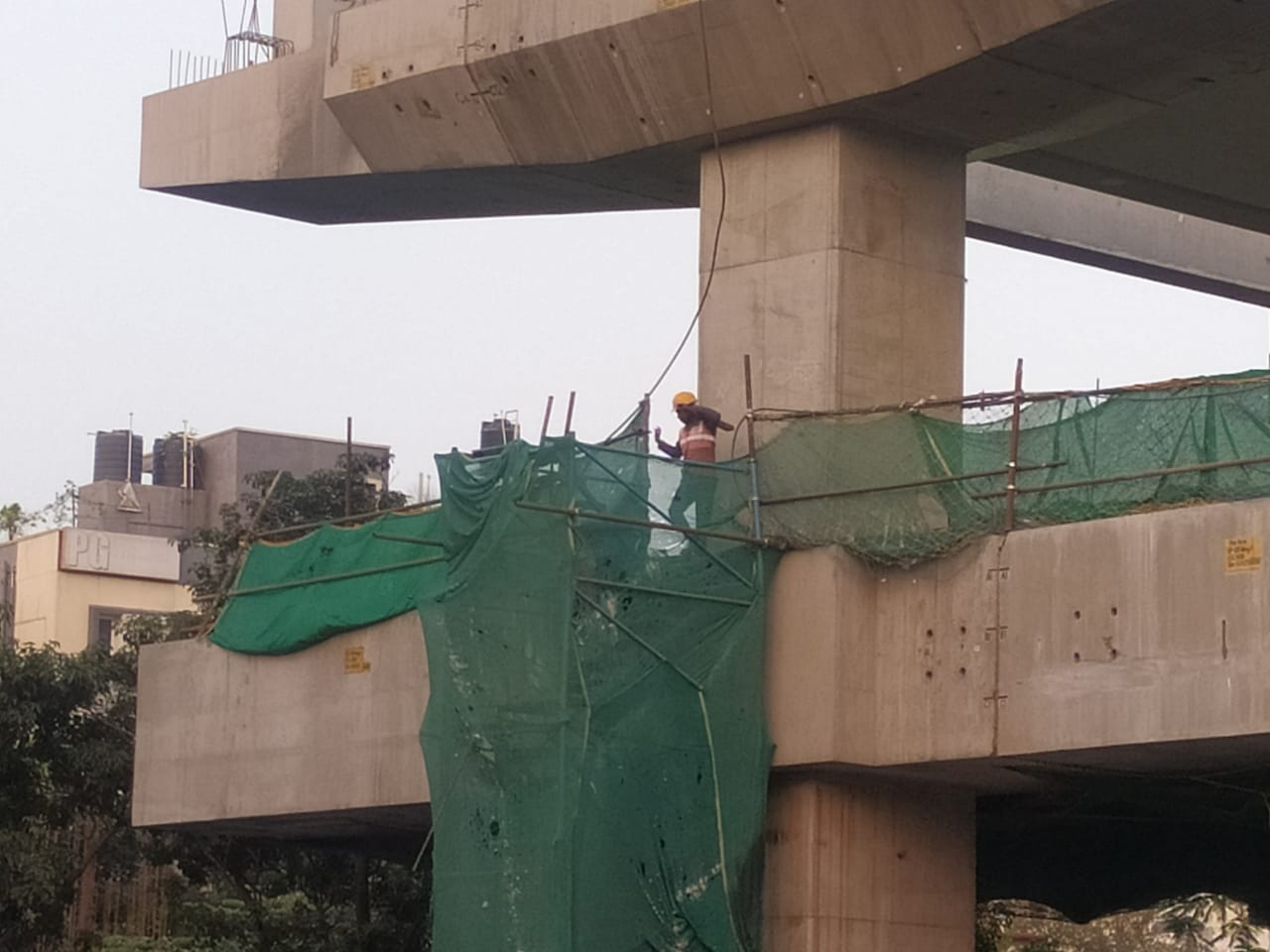The untold stories of labourers who toil to make Namma Metro a reality, overcoming challenges of migration, pay gaps, and uncertain futures.
Published Jan 19, 2025 | 9:00 AM ⚊ Updated Jan 26, 2025 | 12:12 PM

Labourers at the Bengaluru Metro site (South First)
“We are constructing a city that many of us can scarcely afford to live in,” said Ashok, a mason from Uttar Pradesh, one of the migrant workers in Bengaluru contributing to the expansion of the Karnataka capital’s Namma Metro.
“Even the smallest room costs half our earnings,” he added.
The Silicon Valley of India is witnessing the rapid expansion of the Bengaluru Metro. By connecting more parts of the city, it promises faster commutes and reduced traffic woes for lakhs of citizens.
However, behind the sleek trains and modern stations lie the untold stories of the people who physically built this lifeline. These labourers, often invisible to the commuters they serve, work tirelessly under challenging conditions to shape the city’s infrastructure.
South First caught up with a few labourers who shared their struggles, sacrifices, and the lives they had built for themselves in Bengaluru.
Most of the Bengaluru Metro construction site workers hail from states like Bihar, Jharkhand, Uttar Pradesh, and Odisha. For them, the decision to leave home is driven by necessity rather than choice.
Approximately 30,000 workers, most of them migrant labourers, are engaged in the construction of the Bengaluru Metro.
“I left my village in Gaya (Bihar) to earn money for my family. Farming alone wasn’t enough,” Ramesh Kumar (35), a construction labourer told South First. “The work is hard, but at least I can send money home for my children’s education.”
Their journeys often involve borrowing money for travel and settling into cramped accommodations shared with several others. These workers form tight-knit communities to support each other in an unfamiliar city.
Labourers working on the metro project typically endure 10-12 hour shifts under the blazing sun or in the dimly lit tunnels. Safety gear is often limited, and the risk of accidents looms large.
“Sometimes, we don’t get helmets or gloves,” said Pooja Devi (28), one of the few women working on-site. “The men look out for us, but it’s scary knowing any mistake can cost us.”
A 2023 report showed that 38 people lost their lives while 50 others were injured in the metro construction work, which commenced in 2007.
Despite these risks, workers earn between ₹500-₹700 a day, which is in line with the average wage for unskilled labourers in Karnataka but far less than the physical toll their jobs demand. Delayed payments are another common grievance.
Being away from their families is a significant emotional strain for these labourers. Most of them can afford to visit their home only once or twice a year.
“I missed my daughter’s first steps,” said Rajesh Nayak (40), from Odisha. “These sacrifices weigh heavily, but I hope the money I send back makes a difference.”
The separation also takes a toll on their mental health, compounded by the challenges of living in a city where they often feel unwelcome.
Language barriers and high living costs make life even harder for these workers. In a city where Kannada is the primary language, many labourers struggle to communicate with locals.
Some rely on kind employers or community members to help them navigate essential tasks like buying groceries or accessing healthcare.
Despite their struggles, these workers harbour dreams of a better future. Some aspire to return home and start small businesses, while others hope to educate their children for brighter prospects.
“I dream of owning a tea stall back in my village,” said Rekha Kumari (32), but for now, this work is all I have.”
The Bengaluru Metro is a testament to modern engineering and ambition. However, the lives of those who build it deserve equal recognition.
Improved working conditions, timely payments, and initiatives for their welfare can ensure that their contributions are acknowledged and valued.
As the city prepares to inaugurate new stretches of the Metro, let us remember the sweat and sacrifices of the people who make these journeys possible. They are the real architects of Namma Metro.
(Edited by Muhammed Fazil.)
